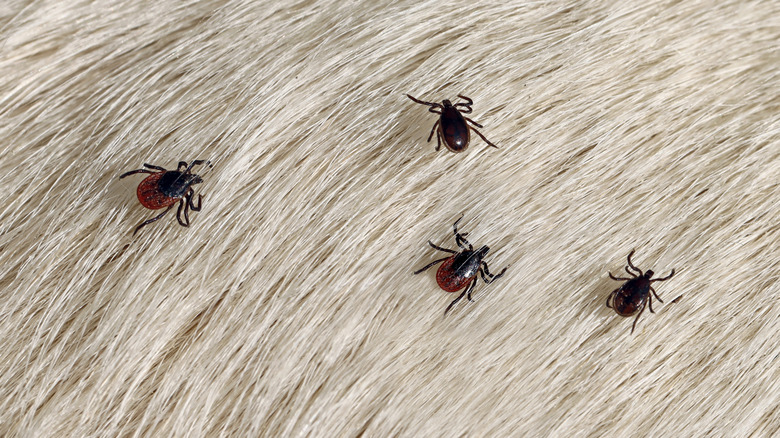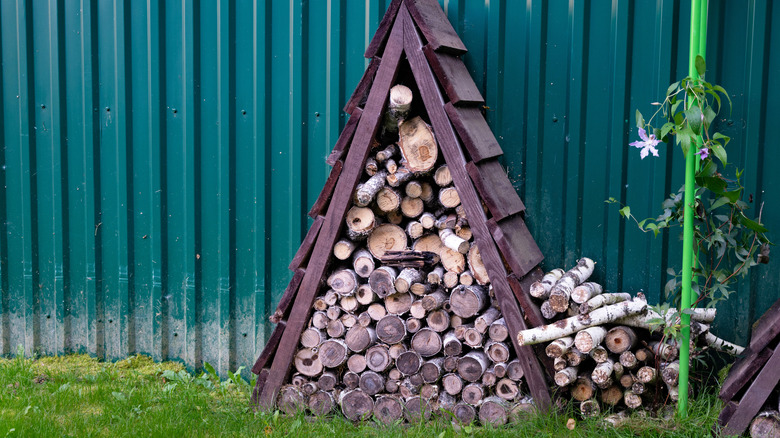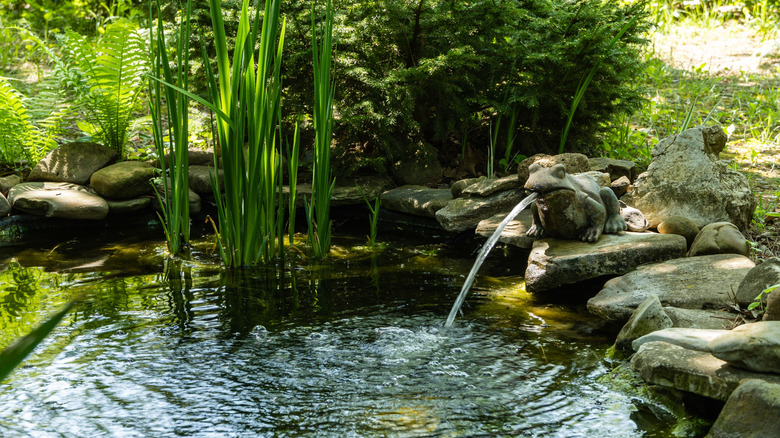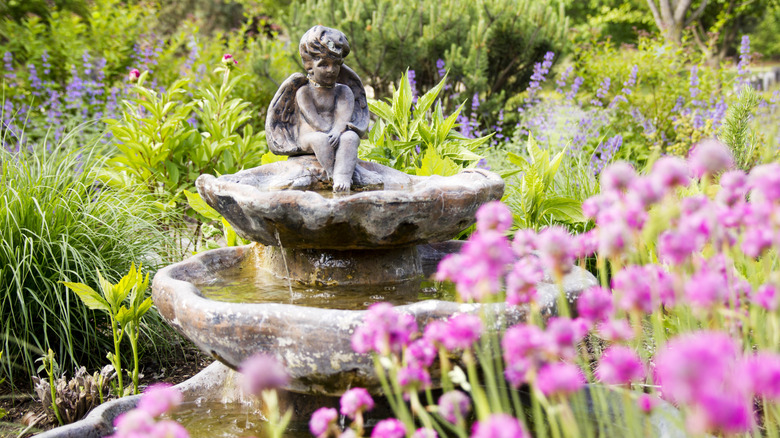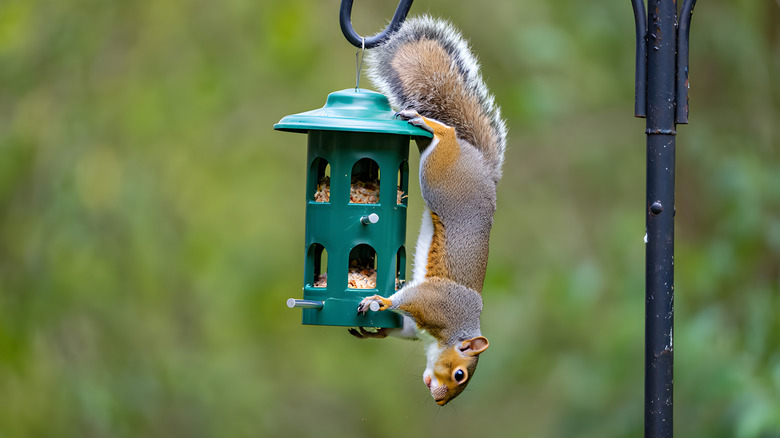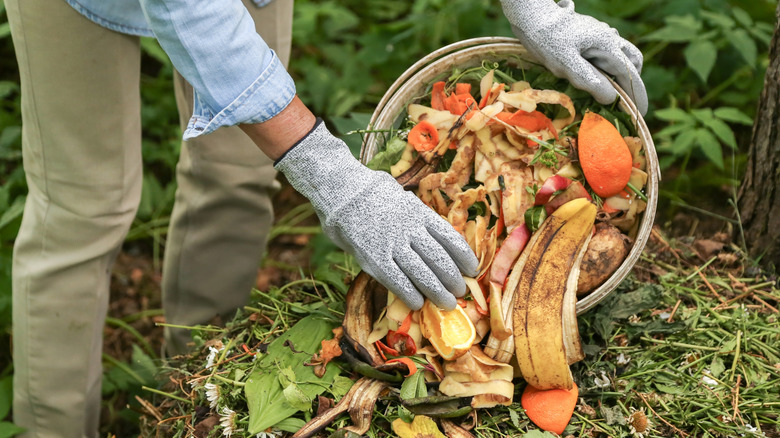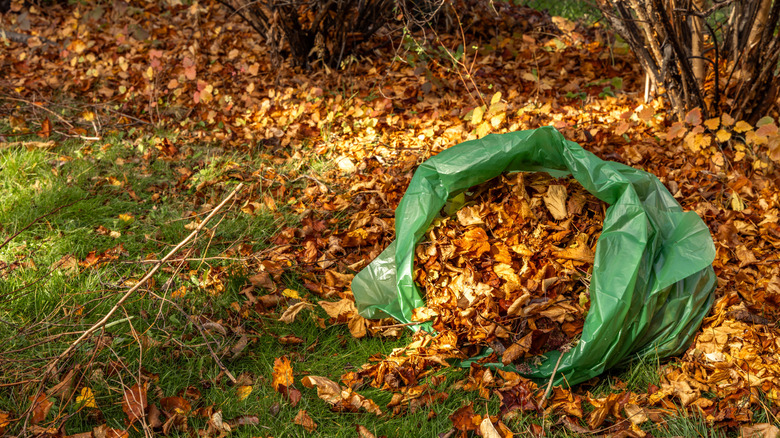11 Common Things In Your Yard That Could Be Luring Ticks
Nothing kills the mood of a backyard cookout or a relaxing day in your garden like discovering a bothersome tick invading your space. Ticks are annoying and potentially dangerous parasites that are capable of spreading viruses, bacteria, and even other parasites. Unfortunately, you can find dozens of tick species throughout the United States, especially in regions with humid climates, as well as in wooded, grassy areas, and places with tall shrubs. Ticks are naturally drawn to cool, moist environments with ample amounts of shade and humidity. They can even survive harsh climates and cold temperatures by burrowing for warmth, making them a real pain to get rid of year-round. If you're not careful, ticks can even end up inside your home, posing a risk to your household.
Ticks can pose a number of risks to you, your loved ones, and your pets since they are known to carry a myriad of diseases that they can spread through feeding on hosts. But there are things you can change around your yard to make it less inviting to unwanted tick populations. From elegant water features to fragrant flowers, many things could be attracting ticks to your yard and garden without you realizing it. Here are some common things found around your yard that might actually be luring ticks in, and what you can do to make your yard less inviting to pesky parasites seeking a new home.
Overgrown lawns
One of the best ways to stop ticks from taking over your lawn is by regularly mowing and maintaining your grass. Ticks are naturally drawn to tall brush and overgrown grass when searching for a suitable habitat, so keeping your lawn trimmed and in good shape can discourage them from making themselves feel right at home in your yard or garden. Ticks can't comfortably live in grass that's shorter than four inches due to the lack of shade and excessive sun exposure, so keeping your grass short will provide an extra barrier of protection from the unwanted visitors.
Wood piles
The piles of wood scraps or firewood you have lying around your yard could be luring ticks and enticing them to stay awhile. The cool, dark gaps between pieces of wood are ideal for them to burrow between. Wood also retains a lot of moisture, which is attractive to tick populations, since they prefer humid climates with ample amounts of shade. You can deter ticks from hiding in your wood piles by keeping them organized and elevated from the ground under a secured shelter or covering them with a tarp to keep the wood pieces dry.
Stone walls
The rustic stone wall that's supposed to guard or protect your garden could actually make your yard all the more inviting to ticks. The cracks and crevices in a stone wall serve as perfect hiding place for ticks to burrow in the dark, especially during the winter months when they hibernate. One way to discourage ticks from settling into your stone wall is to seal the gaps between the rocks or grow plants that keep ticks out of the yard nearby. Keeping the grass surrounding the stone wall short and maintained will also help keep ticks at bay.
Ponds with plants
A tranquil pond can transform a simple garden into a backyard oasis and host a variety of stunning plant varieties and vegetation. However, the striking flowers in your yard's pond can be equally appealing to ticks, who thrive in the aquatic plant's moist ecosystem. Surrounding your pond with plants that repel ticks is a simple way to keep ticks away, while still maintaining a beautiful garden aesthetic. The fragrant aromas of eucalyptus, marigolds (Tagetes), and lavender (Lavandula) are all highly effective at repelling ticks, and can elevate your yard or garden with their vibrant blooms.
Fountains
Small fountains or water features can also attract ticks to your yard since ticks are partial to living near bodies of water and often lay eggs nearby. Fountains can also attract thirsty wildlife looking for a nearby water source. Deer, rodents, and birds all make excellent hosts for ticks, which could potentially be brought into your yard when these animals come looking for a drink in your property. Planting tick-repellent plants can help. There are also plenty of natural methods that can repel deer from your yard, which in turn can keep the ticks that they're hosting far away.
Bird feeders
Bird feeders are another common yard object that could lead to more ticks. Feeders can lure more than just beautiful birds, but also small rodents and mammals that ticks frequently use as hosts, and unintentionally bring the parasite into your garden. If you're dealing with a tick problem, it might be best to move the bird feed to an area of your property that's further away from your house and not surrounded by any tall grass or shaded woods, to prevent the ticks from getting too comfortable.
Compost piles
Compost piles or open waste bins containing food scraps can retain levels of heat and moisture that are ideal for ticks to inhabit. Ticks love to burrow in warm soil, especially during winter months when they shelter away from harsher climates, so rich compost piles of broken down organic matter can be a very appealing home to tick populations. An easy way to keep ticks out of your compost pile is by placing a barrier of wood chips underneath and around the edge. Ticks are naturally deterred by wood chips due to the rough and sharp texture.
Outdoor pets
Your cat or dog may love spending time outdoors, but their fluffy coats and instinct to explore make them the perfect target for ticks. Pets often wander into wooded areas or less-maintained parts of your yard, thanks to their curious nature. These areas can be hotbeds for ticks, which are more than eager to make themselves at home in your beloved pet's fur. This can even lead to ticks being brought inside the house. Keeping your animals up to date on tick medicine and checking them for ticks greatly reduces the risk of hosting the parasites.
Japanese honeysuckle
Japanese honeysuckle (Lonicera japonica) boasts unique and intricate branches that ticks find highly attractive. It is a fast-growing plant that is considered to be invasive, and ticks love to shelter in the dense growth of winding vines that provide ticks with plenty of shade and moist air. While the plant's delicate white blossoms are beautiful, if you're already struggling with a tick problem, it's best to avoid intentionally growing Japanese honeysuckle in your garden. If you do decide to keep some in your yard, regularly trim and prune them to keep the vines from becoming unruly.
Bags of leaves
Leaves can provide ticks with shelter and shade, making them very appealing for ticks seeking a new home. While raking your yard can certainly help prevent ticks from lingering, if you bag the debris and leave it outside, it's likely to attract ticks anyway, especially if it rains and the bags get damp. Thankfully, this problem is easily preventable. Bagging up your leaves after raking your yard is a great way to keep your leaf litter organized. Just be sure to properly dispose of them after you are done to avoid luring unwanted ticks.
Outdoor candles
Scented candles can elevate your patio by creating a serene atmosphere that's inviting and cozy. However, be wary of what scents you choose when picking out a candle to burn outdoors to avoid attracting unwanted visitors. Ticks are sensitive to specific scents and can be attracted to aromas like citrus, warm spice, vanilla, and certain floral smells, all of which are extremely common fragrances for candles. To repel ticks, opt for candles with aromas that ticks dislike, like lavender, rosemary, eucalyptus, or peppermint. Burning these can help keep them at bay and away from your relaxing respite.
